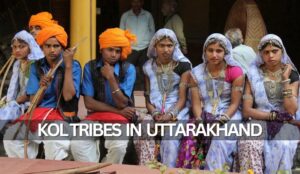“Discover serene 🏞️ Yogadhyan Badri Travel Tips! Plan your perfect pilgrimage to Uttarakhand’s hidden gem. 🙏 #YogadhyanBadri”
Yogadhyan Badri
Yogadhyan Badri is one of the revered ‘Panch Badri’ temples in Uttarakhand, India. Nestled at an altitude of 1,920 meters above sea level, it offers breathtaking panoramic views of the surrounding landscapes. The temple is dedicated to Lord Vishnu and is believed to be the spot where King Pandu, the father of the Pandavas, meditated and found solace.
Yogadhyan Badri, nestled amidst the Himalayan splendor, is a sacred haven that beckons seekers of both adventure and spiritual solace. This revered destination offers a unique blend of natural beauty and profound spirituality, making it a must-visit for those seeking a transformative experience. In this section, we will delve into the history, mythology, and significance of Yogadhyan Badri.
Yogadhyan Badri, nestled amidst the Himalayan splendor, is a sacred haven that beckons seekers of both adventure and spiritual solace. This revered destination offers a unique blend of natural beauty and profound spirituality, making it a must-visit for those seeking a transformative experience. In this section, we will delve into the history, mythology, and significance of Yogadhyan Badri.
History of Yogadhyan Badri:
The history of Yogadhyan Badri dates back to ancient times when sages and ascetics sought refuge in the lap of the Himalayas. This temple, one of the five revered “Panch Badri” temples in Uttarakhand, holds deep-rooted historical significance. It stands as a testament to the spiritual pursuits of individuals who sought communion with the divine in these serene surroundings.
Mythology of Yogadhyan Badri:
Legend of King Pandu: According to Hindu mythology, King Pandu, the father of the Pandavas, is believed to have found solace and engaged in deep meditation at the sacred spot where Yogadhyan Badri now stands. His pursuit of inner peace and connection with the divine essence of the Himalayas lends a mythical aura to the temple.
A Symbol of Sage Vyas: Another legend attributes the temple’s name to Sage Vyas, who is said to have practiced meditation and composed ancient scriptures in the vicinity. The name “Yogadhyan” translates to “meditative posture,” paying homage to the profound spiritual practices that have enriched this site over the ages.
Significance of Yogadhyan Badri:
Nestled at an altitude of 1,920 meters, Yogadhyan Badri holds a unique significance in Hindu spirituality. The temple, dedicated to Lord Vishnu, is revered as a place of deep meditation and self-discovery. It offers seekers a haven to disconnect from the mundane and reconnect with their inner selves, forging a profound connection with both nature and the divine.
Gateway to Self-Realization: Yogadhyan Badri serves as a gateway to self-realization, encouraging visitors to embark on an inward journey of introspection and self-discovery. The serene ambience, surrounded by majestic mountains and lush greenery, sets the stage for seekers to delve into their innermost thoughts and emotions.
Spiritual Vibes: The tranquil energy that envelops Yogadhyan Badri is palpable, drawing visitors into a state of contemplation and mindfulness. Many pilgrims and travelers find solace in the peaceful atmosphere, using the environment as a canvas for spiritual growth and rejuvenation.
A Fusion of Nature and Divinity: Yogadhyan Badri exemplifies the harmony between humanity and nature. The temple’s location amidst breathtaking landscapes is a reminder of the intrinsic connection between the spiritual and natural realms. The fusion of majestic mountains, gurgling streams, and pristine air adds to the allure of this sacred site.
Exploring the Spiritual Vibes
Visiting the Yogadhyan Badri Temple
The main attraction, the Yogadhyan Badri Temple, is an architectural marvel. The idol of Lord Vishnu is placed in a meditative posture, symbolizing deep contemplation. The serene atmosphere of the temple instills a sense of tranquility, inviting visitors to connect with their inner selves.
Meditation and Yoga Practices
Yogadhyan Badri is the perfect place to practice meditation and yoga. Surrounded by pristine nature, the tranquil environment enhances your spiritual journey. Join the morning meditation sessions to rejuvenate your mind, body, and soul.
Best Time to Visit
The ideal time to visit Yogadhyan Badri is during the months of May to June and September to October. The weather is pleasant, and the skies are clear, providing perfect conditions for trekking and exploration. Monsoon season should be avoided due to landslides and slippery paths.
Yogadhyan Badri, nestled amidst the majestic Himalayas, offers a serene sanctuary for spiritual seekers and adventurers alike. The timing of your visit can greatly influence the experience you have in this sacred destination. In this segment, we’ll explore the best time to visit Yogadhyan Badri, ensuring you make the most of your journey.
Timing Matters: Choosing the Right Season
The best time to visit Yogadhyan Badri revolves around two distinct seasons: the warmer months of summer and the pleasant transition into autumn.
Summer (May to June): These months bring a gentle warmth to the region, with daytime temperatures ranging from pleasant to moderately cool. The skies are clear, offering unobstructed views of the breathtaking Himalayan landscapes. This period is ideal for trekking, exploring, and engaging in outdoor activities.
Autumn (September to October): As summer transitions into autumn, the weather remains delightful, with cooler temperatures that are comfortable for both trekking and exploration. The skies are clear and the surroundings are lush after the monsoon season, making this a picture-perfect time to immerse yourself in the beauty of Yogadhyan Badri.
Avoiding the Monsoon Challenge
Monsoon (July to August): It’s advisable to avoid visiting Yogadhyan Badri during the monsoon season due to the challenges posed by heavy rainfall, landslides, and slippery pathways. While the region may still exude its natural charm, the risks associated with the weather make this period less ideal for travel.
Making the Most of Your Visit
No matter the season you choose, keep these pointers in mind to ensure a rewarding Yogadhyan Badri experience:
Pack Wisely: Regardless of the season, pack appropriate clothing, comfortable shoes, and essential items such as a sturdy backpack, water bottle, and first aid kit.
Stay Hydrated: The high altitudes and outdoor activities can lead to dehydration. Carry a water bottle and stay hydrated to fully enjoy your journey.
Respect the Environment: Whether you’re trekking or exploring the temple grounds, practice responsible tourism by leaving no trace behind and respecting the natural surroundings.
Embrace Local Culture: Engage with locals respectfully, learn about their way of life, and follow cultural etiquette when visiting the temple or interacting with residents.
Accommodation Options
Yogadhyan Badri offers limited accommodation options in the form of guesthouses and ashrams. These provide basic amenities, allowing you to immerse yourself in a simpler way of living and connect with nature.
Guesthouses: Embracing Simplicity and Comfort
Description: Guesthouses in Yogadhyan Badri provide a comfortable and cozy retreat for travelers. These accommodations offer basic amenities to ensure your needs are met during your stay. While simplicity is key, you’ll find all the essentials required for a peaceful and restful experience.
Experience: Staying at a guesthouse immerses you in the simplicity of life in the mountains. The serene surroundings and basic comforts create an environment conducive to introspection and relaxation. Engage with fellow travelers and share stories by the fireplace, fostering a sense of camaraderie.
Ashrams: Embracing Spiritual Enlightenment
Description: For those seeking a deeper spiritual experience, staying at an ashram is an ideal choice. Ashrams in Yogadhyan Badri provide an opportunity to embrace a holistic lifestyle, including meditation, yoga, and spiritual practices.
Experience: Staying at an ashram offers a unique chance to delve into spiritual practices under the guidance of experienced mentors. Participate in meditation sessions, engage in discussions on philosophy, and immerse yourself in the tranquil atmosphere that resonates with the essence of Yogadhyan Badri.
Why Yogadhyan Badri Is Famous:
Spiritual Significance: Yogadhyan Badri is famous for its spiritual resonance. It is believed that King Pandu, father of the Pandavas, engaged in profound meditation here, infusing the site with deep spiritual energy.
Mythical Legends: The temple’s name itself, which translates to “meditative posture,” reflects the site’s connection to meditation and spiritual introspection. This lends an air of mystery and intrigue to the destination.
Part of Panch Badri: Yogadhyan Badri is one of the five revered “Panch Badri” temples, making it a crucial pilgrimage site for those seeking divine blessings and a connection to ancient Hindu traditions.
Things to Know about Yogadhyan Badri:
- Historical Legacy: The temple holds a historical legacy dating back centuries, reflecting the spiritual pursuits of sages and seekers who found solace in its serene ambiance.
- Architectural Splendor: The intricate architecture of Yogadhyan Badri Temple is a visual treat, captivating visitors with its intricate carvings and aesthetic design.
- Natural Abundance: Nestled amidst the Himalayas, the surroundings of Yogadhyan Badri are a breathtaking combination of lush greenery, towering mountains, and crystal-clear skies.
- Meditative Atmosphere: The tranquil energy of the temple encourages introspection and meditation, creating a serene atmosphere conducive to spiritual growth.
How to reach Yogadhyan Badri
Journey to Yogadhyan Badri:
Reaching Yogadhyan Badri involves a journey that merges the allure of exploration with the quest for spiritual enrichment. The primary route to this sacred destination starts from the well-connected town of Joshimath.
From Haridwar to Joshimath:
Description: Begin your journey by traveling to Haridwar, a major pilgrimage and travel hub. From Haridwar, you can avail of various transportation options, including buses and shared taxis, to reach Joshimath.
Distance: The distance between Haridwar and Joshimath is approximately 280 kilometers.
Travel Time: The travel time can vary from 8 to 10 hours, depending on road conditions and traffic.
From Rishikesh to Joshimath:
Description: Another starting point is Rishikesh, known for its spiritual significance and natural beauty. Similar to the route from Haridwar, you can opt for buses or shared taxis to reach Joshimath from Rishikesh.
Distance: The distance between Rishikesh and Joshimath is around 250 kilometers.
Travel Time: The journey can take approximately 7 to 9 hours, considering the road conditions.
The Trek to Yogadhyan Badri:
Upon reaching Joshimath, the journey to Yogadhyan Badri continues with a scenic trek that adds an adventurous touch to your experience.
From Joshimath to Yogadhyan Badri: The trek from Joshimath to Yogadhyan Badri covers approximately 10 kilometers. This trail winds through lush forests, charming bridges, and picturesque streams, offering glimpses of nature’s beauty and tranquility.
Trek Duration: The trek usually takes around 5 to 6 hours, depending on your pace, and stops along the way.
Things to Do in Yogadhyan Badri:
Explore the Temple:
Description: Delve into the heart of Yogadhyan Badri by visiting the temple itself. Witness the enchanting idol of Lord Vishnu in a meditative pose and experience the spiritual aura that permeates the surroundings.
Trek to Mana Village:
Description: Embark on a journey to Mana Village, the last inhabited village before the Indo-Tibetan border. Immerse yourself in the local culture, interact with friendly villagers, and gain insights into their way of life.
Engage in Meditation and Yoga:
Description: Embrace the spiritual vibes of Yogadhyan Badri by participating in meditation and yoga sessions. The serene environment enhances your practice, allowing you to find inner peace and rejuvenation.
Capture Breathtaking Views:
Description: The landscapes of Yogadhyan Badri offer endless opportunities for photography. Capture the stunning vistas during the golden hours of sunrise and sunset, preserving the memories of your journey.
Indulge in Local Cuisine:
Description: Savor the flavors of Garhwali cuisine by trying local dishes such as Aloo Ke Gutke, Kachmauli, and Singodi. Each bite is a delicious journey into the region’s culinary heritage.
Thrilling Trekking Routes
Mana Village Trek
Embark on a trek to the nearby Mana Village, known as the last inhabited village before the Indo-Tibetan border. The village offers insights into local culture and traditions, making it a rewarding experience.
Vyas Cave Trek
For the adventurous souls, the Vyas Cave Trek takes you to the cave where sage Vyas is believed to have composed the Mahabharata. The trail is challenging yet exhilarating, promising breathtaking views along the way.
Experiencing Local Cuisine
Indulge in the local Garhwali cuisine that reflects the flavors of the region. Don’t miss out on dishes like Aloo Ke Gutke, Kachmauli, and Singodi, which are sure to tantalize your taste buds.
Packing Essentials for Your Trip
When visiting Yogadhyan Badri, pack essentials like comfortable trekking shoes, warm clothing, a sturdy backpack, a first aid kit, and a camera to capture picturesque landscapes.
Safety and Precautions
While Yogadhyan Badri is a serene destination, it’s important to be cautious during treks. Follow the guidelines provided by the local authorities and guides, and stay hydrated to avoid altitude sickness.
Respectful Cultural Etiquette
Respect the local customs and traditions. Dress modestly, and seek permission before clicking photographs of locals or their property.
Capturing Memories: Photography Tips
The landscapes of Yogadhyan Badri are a photographer’s delight. Capture the ethereal beauty during early mornings and late evenings for the best lighting conditions.
Souvenir Shopping
Bring back a piece of Yogadhyan Badri with you by shopping for local handicrafts, woolens, and spiritual artifacts available in the nearby markets.
Connecting with Locals
Interact with the friendly locals to gain insights into their way of life. Engage in conversations and exchange stories to make your trip even more enriching.
Embracing the Tranquility
Allow yourself to be engulfed by the tranquility of Yogadhyan Badri. Disconnect from the digital world and immerse yourself in the serenity that this destination offers.
Top Places to Visit Near Yogadhyan Badri
- Auli: Nestled amidst the Garhwal Himalayas, Auli is a year-round destination. In winter, it transforms into a skiing haven with glistening slopes. Summer unveils breathtaking meadows and sweeping vistas.
- Valley of Flowers: A UNESCO World Heritage Site, this ethereal valley comes alive with a riot of colors during the monsoon. Explore rare flora, meandering streams, and a serene ambiance.
- Badrinath Temple: One of the Char Dham pilgrimage sites, Badrinath Temple beckons with spiritual significance. Seek blessings amidst the majestic backdrop of snow-clad peaks.
- Hemkund Sahib: Situated at a high-altitude lake, this revered Sikh shrine offers a challenging trek and awe-inspiring views. It’s a place of serenity and devotion.
- Mana Village: Experience the last village before the Tibet border. Marvel at its unique culture, ancient cave dwellings, and proximity to mythical sites like Vyas Gufa.
- Joshimath: Serving as a gateway to several Himalayan destinations, Joshimath boasts spiritual importance and acts as a base for treks like the Valley of Flowers and Kuari Pass.
- Nanda Devi National Park: A biodiversity hotspot, this park houses diverse flora and fauna, including the elusive snow leopard. It’s a paradise for nature enthusiasts.
- Tapovan: Accessible via a challenging trek, Tapovan is a serene spot for meditation and self-discovery. The panoramic views of the surrounding peaks are truly rewarding.
- Govindghat: Starting point for treks to Hemkund Sahib and Valley of Flowers, Govindghat offers scenic vistas and a chance to immerse in the beauty of the region.
- Bhavishya Badri: Known as the “Future-seat” of Lord Badri, this lesser-known pilgrimage site offers tranquility and a sense of anticipation.
Yogadhyan Badri Travel Tips
1. Location and Accessibility: Yogadhyan Badri is located in the picturesque town of Pandukeshwar in the Chamoli district of Uttarakhand, India. The nearest major town is Joshimath. You can reach Yogadhyan Badri by road from Rishikesh or Haridwar. The nearest railway station is Rishikesh, and the nearest airport is the Jolly Grant Airport in Dehradun.
2. Weather and Best Time to Visit: The weather in Yogadhyan Badri varies throughout the year. Summers (April to June) are pleasant with temperatures ranging from 15°C to 25°C. Monsoons (July to September) bring heavy rainfall and might make travel difficult due to landslides. The best time to visit is during the spring and autumn months (March to June and September to November) when the weather is pleasant, and the temple is easily accessible.
3. Clothing and Packing: Pack light cotton clothing for summers and include warmer clothing for evenings and early mornings, as temperatures can drop. If you plan to visit during the monsoon or colder months, pack rain gear and warm layers. Don’t forget sturdy walking shoes or trekking boots, especially if you plan to explore the surrounding areas.
4. Accommodation: Accommodation options are available in Joshimath, which is the base town for visiting Yogadhyan Badri. There are hotels and guesthouses catering to various budgets. It’s advisable to book your accommodation in advance, especially during peak tourist seasons.
5. Local Cuisine: Try the local Garhwali cuisine, which includes dishes like Aloo Ke Gutke (spiced potatoes), Mandua ki Roti (finger millet bread), and local lentil preparations. While traveling, carry some snacks and bottled water, as the options might be limited during the journey.
6. Trekking and Outdoor Activities: Yogadhyan Badri can be reached by a short trek from Joshimath. The trek is relatively moderate, but it’s important to be prepared with proper footwear, water, and some energy-boosting snacks. The area around Yogadhyan Badri is also great for nature walks and trekking, so consider exploring the trails if you’re an outdoor enthusiast.
7. Cultural Sensitivity: Respect the local customs and traditions while visiting the temple and the surrounding areas. Dress modestly and be mindful of your behavior, as this is a sacred site for the locals.
8. Health and Safety: Carry a basic medical kit with essentials like medicines for common ailments, bandages, antiseptics, etc. The hilly terrain might pose challenges for people with certain health conditions, so consult your doctor before planning the trip.
9. Photography and Permissions: While photography is usually allowed, it’s a good practice to ask for permission before taking pictures of the temple or the local residents. Be respectful of their privacy and traditions.
10. Local Guidelines and Regulations: Before traveling, check for any travel advisories, local guidelines, and regulations related to COVID-19 or any other relevant factors that might affect your travel plans.
Conclusion
Yogadhyan Badri is more than just a travel destination; it’s a journey of self-discovery and spiritual awakening. With its awe-inspiring landscapes, rich history, and serene atmosphere, it’s a place that offers a unique blend of adventure and introspection. Plan your trip to Yogadhyan Badri and unlock the treasures that await amidst the Himalayan embrace.
FAQs
Q1: Is Yogadhyan Badri accessible throughout the year?
A: While the temple remains open, treks are not recommended during the winter months due to heavy snowfall.
Q2: Can I hire a guide for the treks?
A: Yes, it’s advisable to hire a local guide who is familiar with the terrain and can ensure your safety.
Q3: Are there any medical facilities available?
A: Basic medical facilities are available in nearby towns, so carry a basic first aid kit with you.
Q4: What should I wear while visiting the temple?
A: Modest and comfortable attire is recommended, and it’s customary to cover your head before entering the temple.
Q5: Are there any restrictions on photography?
A: While photography is allowed, it’s important to seek permission before photographing locals or inside the temple.






